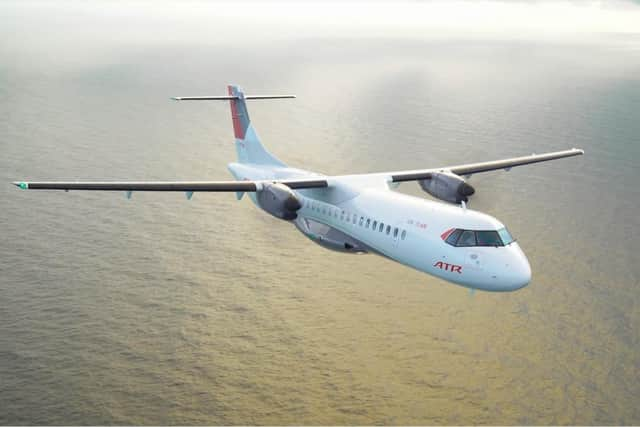Near crash-landing in Belfast: Captain reported 'multiple failures – including the system telling us what has failed'
and live on Freeview channel 276
The Aer Lingus flight suffered a loss of its landing gear extension system – plus a raft of others – while about 600 metres (roughly 2,000ft) above Belfast Lough and closing in on the City Airport, with about eight miles to go until touchdown.
The captain later said he was unsure of what exactly was wrong, because the system which was meant to tell them had also failed.
Advertisement
Hide AdAdvertisement
Hide AdIf landing gear refuses to deploy, pilots face the prospect of a “belly landing” – hitting the runway with no wheels and skidding along on the fuselage, something which can cause the engines to rip off and badly damage the plane.


Another option, though perhaps riskier still, is to ditch on water.
In this case, thanks to some “intuitive” thinking by the crew, the systems were powered back up and such a crash-landing was averted.
Here is an account of the incident, published by the Air Accidents Investigation Branch last week.
Advertisement
Hide AdAdvertisement
Hide AdThere were 36 people on board the seven-year-old ATR 72 600 plane at the time, making it half-full.
The crew started in Belfast just before 6am on September 19, 2022.
They noticed two “master caution” warnings going off during the outward flight to Leeds, but there did not seem to be anything actually wrong, so when they got to Leeds they agreed to fly back to Belfast.
But once airbourne, the “master caution” warning went off a third time.
Advertisement
Hide AdAdvertisement
Hide AdThen as they flew on, at 8.50am off the east coast of the Ards Peninsula, the autopilot turned off and the intended altitude reset itself to zero.
The crew turned the autopilot back on but it disengaged again, and “multiple failures appeared on the engine warning display”.
The normal pitch trim system (which helps point the plane up or down) stopped functioning, and “a lot of force” was required to slow their descent.
The pilot asked the co-pilot to transmit a “pan pan pan” warning signal to air traffic control, but the normal hailing frequency had also failed so he had to use a secondary one.
Meanwhile, a key cockpit screen had “frozen”.
Advertisement
Hide AdAdvertisement
Hide AdThey had no electronic assistance (called an ILS system) to help guide them down to ground, so opted to fly a “visual” landing and with eight miles to go and a height of 1,900ft they activated the landing gear – but nothing happened.
There is an emergency maneuver called a “gravity extension” (basically, getting the wheels to fall into place under their own weight), but the crew didn’t have enough time to try it.
They considered aborting the landing and circling around, but the captain worried that the plane’s “already difficult nose-down pitch control forces” would only get worse on a second attempt, so they pressed on without gear.
By then they were six miles from the runway.
However, the captain then “intuitively” switched off something called the “transformer rectifier unit” and power for their lost systems came back, letting them land safely.
Advertisement
Hide AdAdvertisement
Hide AdIn interviews afterwards, the captain stated that “the aircraft had a lot of failures, including the system which tells you what failed”, and that the controls were only “just about manageable”.
Investigators found they had faced “extreme, unforeseen, and dynamic” failures, and praised the crew’s teamwork in getting the plane down, saying the problem was down to a failure in one of the plane’s components (called a 95PA contactor).